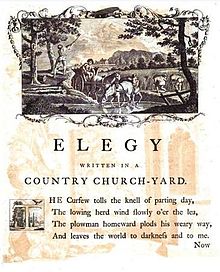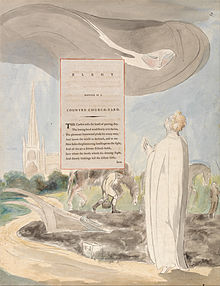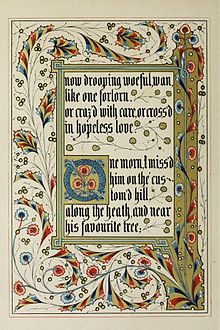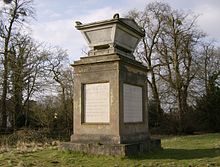 “Men judge by the complexion of the sky, the state and inclination of the day.”
“Men judge by the complexion of the sky, the state and inclination of the day.”
King Richard II
The apparent enthusiasm for Trump’s success in the US presidential elections is an event historically recurrent and humanly understandable. The wonderful vignette by the Italian artist Vincenzo Apicella perfectly illustrates it.
Even the famous horse, nominated senator by emperor Caligula, if installed into the “White” (oxymoron) House, would have produced similar externations – when compared to the ostensive alternative. The miasmas of rotten fruit are still preferable to the stench of a sewer. (“I do smell all horse-piss; at which my nose is in great indignation.”) (1)
The “protests” sprung here and there, when not paid and organized by some notorious NGOs, display and reflect an essential character of American politics. Namely, the ability to present to the world the charade of a conflict between apparently dissenting forces, which, when even cursorily examined, are essentially the same. It’s a case where, “… the weight of a hair will turn the scales between their avoirdupois.” (2)
What will happen is unpredictable, though not completely. For unusual, in these elections, was not so much the substance, but the colossal difference between the candidates’ personalities. So that their so called programs were assumed to be as different, though actually barely so and only on the surface.
That the debate among contenders should have centered on the uttered sexual aphorisms and past conduct of one of the candidates, is sufficient evidence of the thinness of the differences and the thickness of the similarities among their respective programs. As the Russian Foreign Minister amusingly observed, “There are too many pussies in these elections.”
Educated and indoctrinated to tolerate, when not welcome, any deviance in sex, however revolting, the American people have accepted the spirit expressed by the lines,
“All this the world well knows, yet none knows well
To shun the heaven that leads men to this hell.”(3)
More importantly, and for reasons too long for a post, the accepted historical labels of “left” and “right” have undergone a shift comparable, in scope, to the slow inversion between the north and south magnetic fields of the earth. So that what was normally considered the left, now behaves as the historical right, and the historical right seems to take up the issues of the left.
Nothing strikingly new even here. Though under very different conditions, in the 1930s, the national socialist movement in Germany crushed the possibility of a socialist revolution by appropriating the instances of the working class, while lifting their spirit and economic conditions. And inspiring them with instincts of greatness, via transference to nationalistic feelings.
For fascism is also the last stronghold of resistance by the bourgeoisie when threatened. Today the 1% is not threatened at all – the masses at large are too busy looking at their smartphones. But prudence suggests that the illusion of a forthcoming change is an effective way to prevent any change at all. Hence Trump.
Anyway, the situation in the US today is not that of Germany in the 1930s. Those who define themselves socialists, democrats or progressives, are, in reality, the long hand of economic hegemony, the alibi of raw power. And, when needed, they act as the operating shadow of the 1%, which rakes for itself all the current resources of the planet. As “progressives” they are the treasoners of progress,
“To say the truth, so Judas kiss’d his master;
And cried ‘all hail!’ whenas he meant all harm.” (4)
Therefore, the progressives’ association with power, and the reputation in their professions by means of prestigious titles and assignments, depend directly on their ability to confound and deceive. Deception needed to better perform social massacres, to hide the concentration of power and to prevent access to those who do not belong to the coterie. These resisters, assuming they exist – which is by no means certain – may seem a danger to the status-quo and to that opaque network, which constitutes the global government.
Consequently, what better means than to stage a remarkable show of great differences between the ‘republican’ and ‘democrat’ candidates. Including the ridiculous claims of statistical polls giving a 99% victory to the woman whose sole name blisters my tongue. (5) Polls conducted, for example, by nonetheless than the Princeton University – the undisputed world champion of IQ. For the conclusions are clear. Either they are fools, or behind those unbelievable polls there is something more sinister. I believe the latter to be the case. For
“Folly in fools bears not so strong a note,
As foolery in the wise, when wit doth dote.” (6)
Equally ridiculous were the claims that Russia acted and plotted to subvert a certain victory by the simulacra of a woman, and other similar absurdities (more descriptive is the French word “boutades”).
In America and elsewhere, no one can effect any change without radically transforming the current development model and challenging some presently untouchable assumptions.
The environmental problems, for example, are a direct result of the extant, sanctioned and undisputed development model, which also includes the unquestioned exponential explosion of world population. By the time when any of my twenty-five readers will finish reading this short article, there will be 2,000 more humans on earth.
Population growth is a national and global security issue. But discussing a curb on population growth is forbidden.
Shelter, health care, food and water for all are the goals of an egalitarian society. But such egalitarian world cannot coexist with endless growth and unbridled population explosion. Being a reality too painful to admit, the alternatives are ignored.
In this the Roman Catholic Church, though not the only important opposition to a population growth debate, is the most significant. Its unsurpassed ability to pander to power and condition it, will  prevent any change. The snap-shot shown here is worth a thousand words.
prevent any change. The snap-shot shown here is worth a thousand words.
Given the links between population explosion and environmental consequences, the so-called agreements on climate are a compromise between the will to change nothing and the necessity of appearing to do something – a perfect example of the politically correct applied at large.
Trump says he does not believe that humans cause climate change. Some are already scandalized, but, in the context of reality, that belief is irrelevant. The US never signed the so-called Kyoto agreement. Besides, notwithstanding his concern for the environment, Obama will also be notoriously remembered as the fracking president. If the data is correct, 17 million Americans live within one mile of a fracking station, with all the pleasant consequences of undrinkable water and diseases directly or indirectly attributable to fracking pollution.
As for the wall with Mexico, it already exists. Trump’s revamped or extended wall, as Italian journalist and film-maker Fulvio Grimaldi wrote, is an instrumental proposition to soothe the anguish of people whose jobs were hijacked by corporations and transferred to underpaid and exploited Central American men and women. And whose house was lost thanks to banks too big to fail and bankers too big to jail. Same reasoning applies to the drugs, liberally imported through Mexico, along with the refugees who escape from the neo-liberal policies imposed by Washington’s governing puppets in their countries of origin.
The difference between Clinton’s advocated “Open borders from Alaska to Argentina” and Trump’s chimeric wall is one of degrees, not substance. We are a long way away, ideologically and practically, from pulling the chain and freeing the world and the toilet from its neo-liberal encumbrance.
Other symptoms show that there is no meaningful difference between the candidates’ programs. Upon the announcement of the results of the election, the Israeli newspaper Haaretz published an article stating, “The election (of Trump) marked the greatest victory and validation for anti-Semitism in America since 1941.”
So much so that, among the first Trump’s pronouncements on the subject was the sanctioning of the transfer of the American embassy from Tel Aviv to Jerusalem – perhaps the last humiliation for the Palestinians, subjected to genocide, apartheid and theft of their land. While, concurrently, the Trump camp made it known that the expansion of Jewish settlements in Palestine “is not a concern” for the new administration. The Zionist grip on the fabric of America is unquestionable, unchallenged and untouchable. And America has contributed to the Zionist cause with much more than the pound of flesh demanded by the Merchant of Venice.
Trump’s victory was hailed by his supporters chanting “U S A! U S A!” Which has a curious resonant ring with “Sieg Heil, Sieg Heil.” And we know what that chant led to.
“We will make America great!’ says Trump. I do not remember any president saying anything different. All who did, perhaps with the exception of Carter, meant more arms, more “defence spending”, more military, more wars and more exceptionalism, whatever that means.
Trump is an oligarch, skilled in negotiations, recantations, dealing and double dealing. As XIX century French novelist Balzac pointed out, “Behind every great fortune, there is a great crime.” The other oligarchs will allow him the cosmetics of success, as long as there is no threat of change.
For it was the unfathomable depth of degradation of a Clinton that created a Trump. Expect within weeks, if not days, the transformation of the fiercest Clintonites into reformed Trumpists.
All in all, to paraphrase Mark Twain, “The death of Obamo-Clintonism was greatly exaggerated.” Feel free to “give me ten thousand eyes, and I will fill them with prophetic tears.” (7)
For, in the end, all we can realistically do is to watch,
“Who loses and who wins; who’s in, who’s out;
And take upon’s the mystery of things…” (8)
until someone will come up with better explanations.
Opening quote. King Richard queries Lord Scroop on the expected reinforcements of the Duke of York, needed to fight the usurping Bolingbroke. But York himself has defected to Bolingbroke, the future Henry IV.
- The Tempest
- King Henry IV, p2
- Sonnet 129
- K. Henty VI, p3
- Macbeth
- Love’s Labours Lost
- Troilus and Cressida
- King Lear.
Image source. Vincenzo Apicella (vignette).
Publicly available pictures (Cardinal Dolan between Clinton and Trump)




























